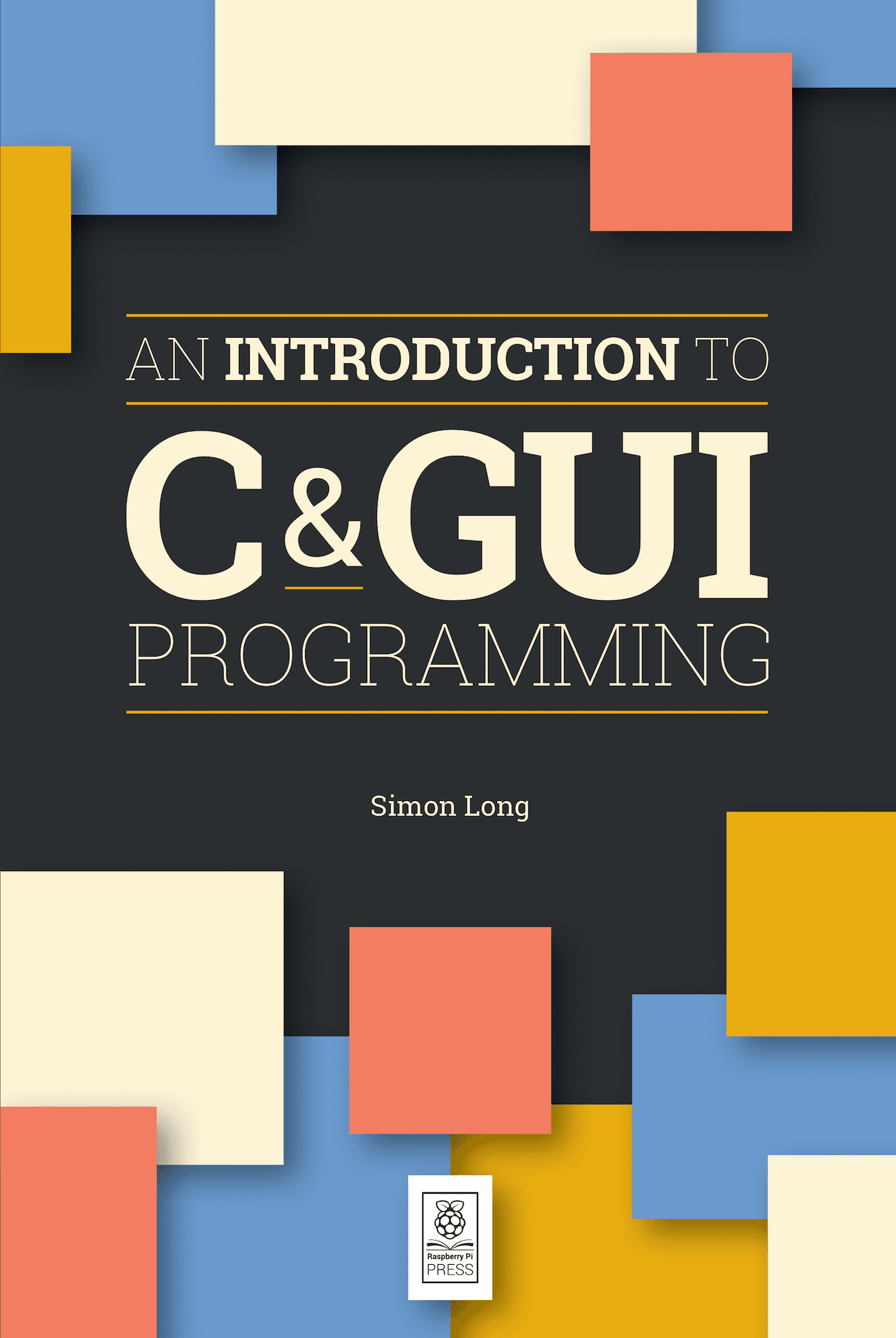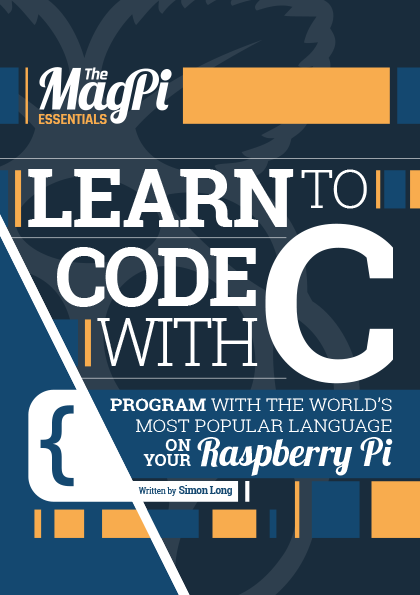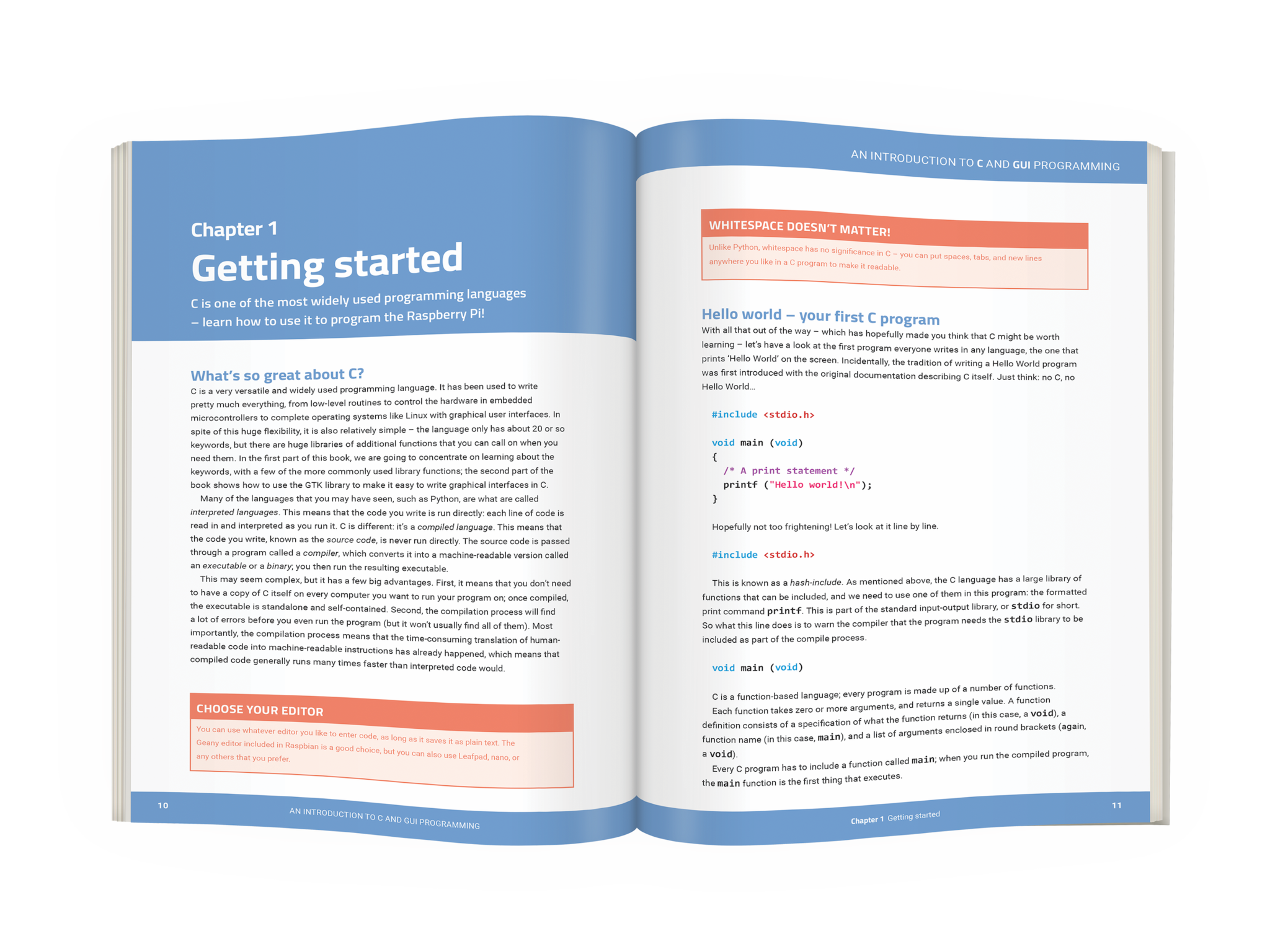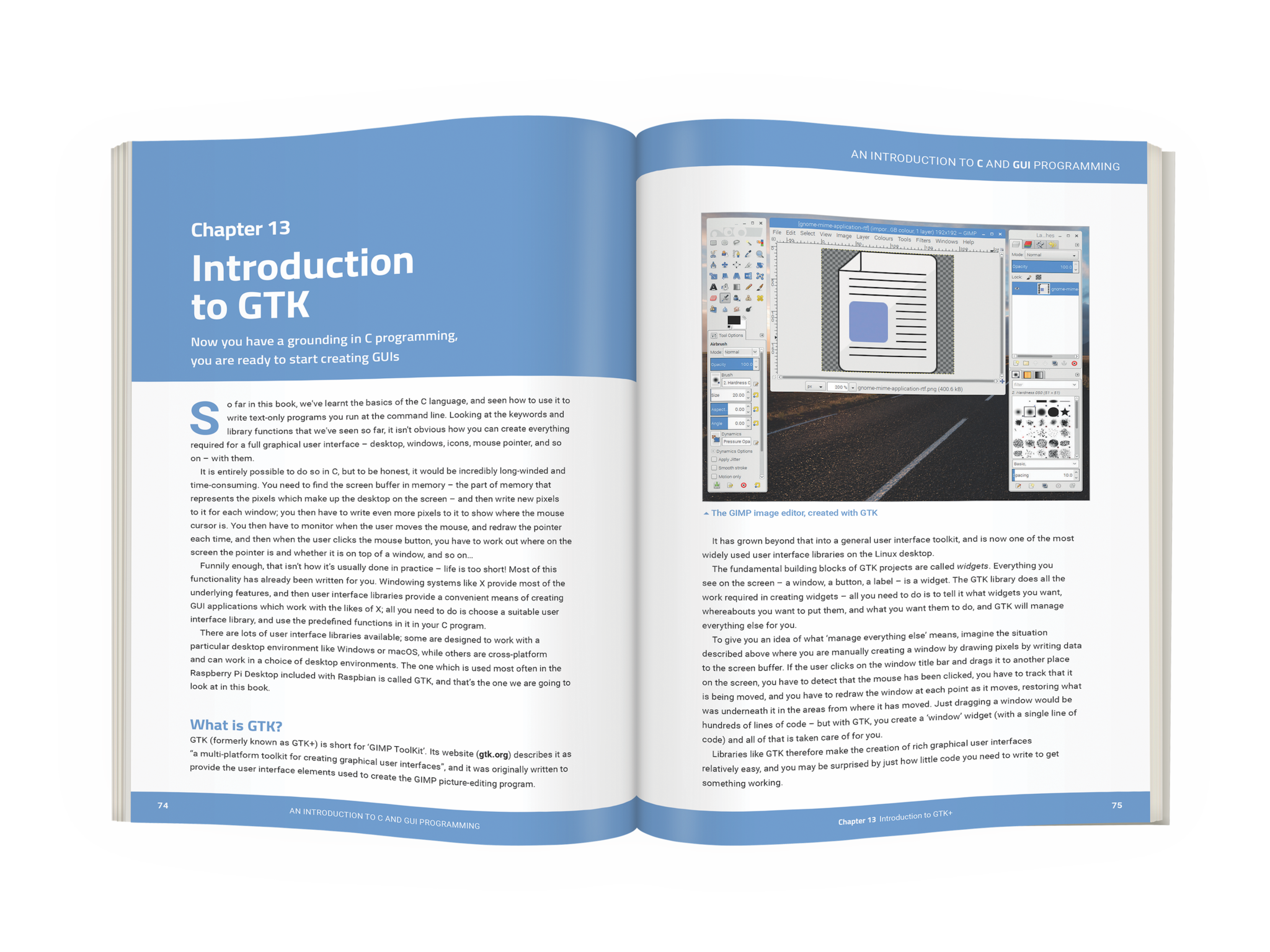The latest book from Raspberry Pi Press, An Introduction to C & GUI Programming, is now available. Author Simon Long explains how it came to be written…
Learning C
I remember my first day in a ‘proper’ job very well. I’d just left university, and was delighted to have been taken on by a world-renowned consultancy firm as a software engineer. I was told that most of my work would be in C, which I had never used, so the first order of business was to learn it.
My manager handed me a copy of Kernighan & Ritchie’s The C Programming Language, pointed to a terminal in the corner, said ‘That’s got a compiler. Off you go!’, and left me to it. So, I started reading the book, which is affectionately known to most software engineers as ‘K&R‘.
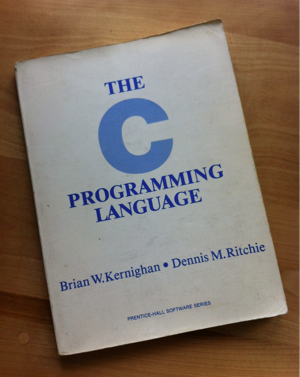
I didn’t get very far. K&R is basically the specification of the C language. Dennis Ritchie, the eponymous ‘R’, invented C, and while the book he helped write is an excellent reference guide, it is not a great introduction for a beginner. Like most people who know their subject inside out, the authors tend to assume that you know more than you do, so reading the book when you don’t know anything about the language at all is a little frustrating. I do know people who have learned C from K&R, and they have my undying respect!
I ended up learning C on the job as I went along; I looked at other people’s code, hacked stuff together, worked out why things didn’t work, asked for help from my colleagues, made a lot of mistakes, and gradually got the hang of it. I found only one book that was helpful for a beginner: it was called C For Yourself, and was actually one of the manuals for the long-extinct Microsoft QuickC compiler. That book is now impossible to find, so I’ve always had to tell people that the best book for learning C as a beginner is ‘C For Yourself, but you won’t be able to find a copy!’
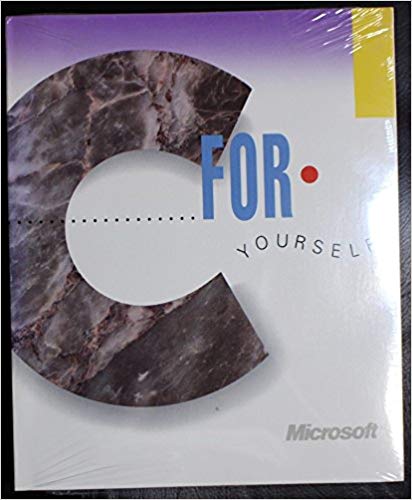
Writing An Introduction to C & GUI Programming
When I embarked on this project, the editor of The MagPi and I were discussing possible series for the magazine, and we thought about creating a guide to writing GUI applications in C — that’s what I do in my day job at Raspberry Pi, so it seemed a logical place to start. We realised that the reader would need to know C to benefit from the series, and they wouldn’t be able to find a copy of C For Yourself. We decided that I ought to solve that problem first, so I wrote the original beginners’ guide to C series for The MagPi.
(At this point, I should stress that the series is aimed at absolute beginners. I freely admit that I have simplified parts of the language so that the reader does not have to absorb as much in one go. So yes, I do know about returning a success/fail code from a program, but beginners really don’t need to learn about that in the first chapter — especially when many will never need to write a program which does it. That’s why it isn’t explained until Chapter 9.)
So, the beginners’ guide to C came first, and I have now got round to writing the second part, which was what I’d planned to write all along. The section on GUIs describes how to write applications using the GTK toolkit, which is used for most of the Raspberry Pi Desktop and its associated applications. GTK is very powerful, and allows you to write rich graphical user interfaces with relatively few lines of code, but it’s not the most intuitive for beginners. (Much like C itself!) The book walks you through the basics of creating a window, putting widgets on it, and making the widgets do useful things, and gets you to the point where you know enough to be able to write an application like the ones I have written for the Raspberry Pi Desktop.
It then seemed logical to bring the two parts together in a single volume, so that someone with no experience of C has enough information to go from a standing start to writing useful desktop applications.
I hope that I’ve achieved that — and if nothing else, I hope that I’ve written a book which is a bit more approachable for beginners than K&R!
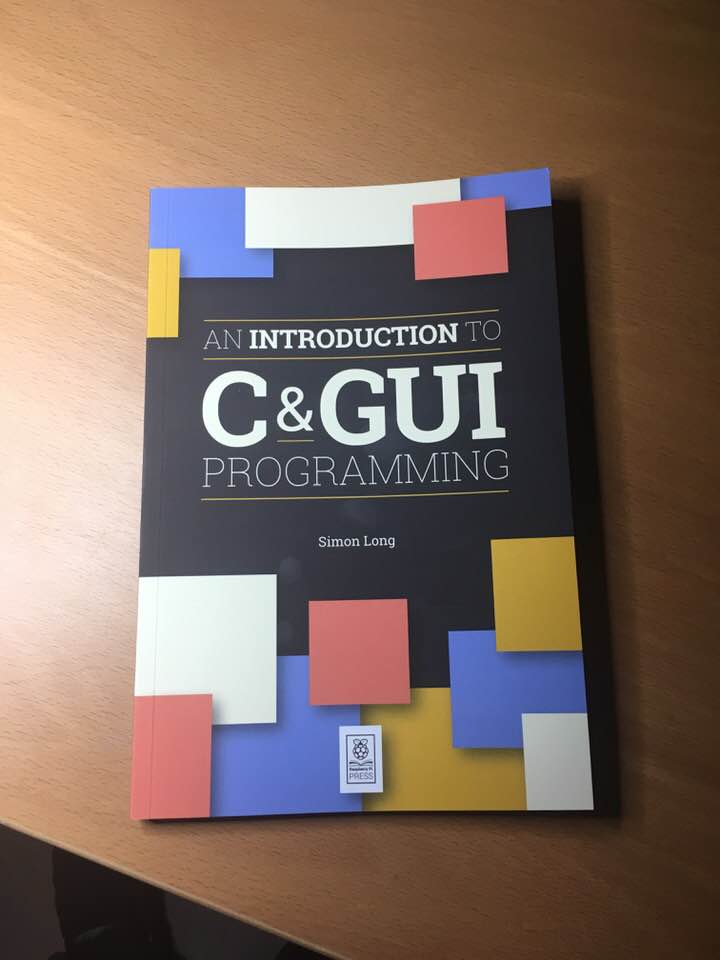
Get An Introduction to C & GUI Programming today!
An Introduction to C & GUI Programming is available today from the Raspberry Pi Press online store, or as a free download here. You can also pick up a copy from the Raspberry Pi Store in Cambridge, or ask your local bookstore if they have it in stock or can order it in for you.
Alex interjects to state the obvious: Basically, what we’re saying here is that there’s no reason for you not to read Simon’s book. Oh, and it feels really nice too.
Website: LINK


